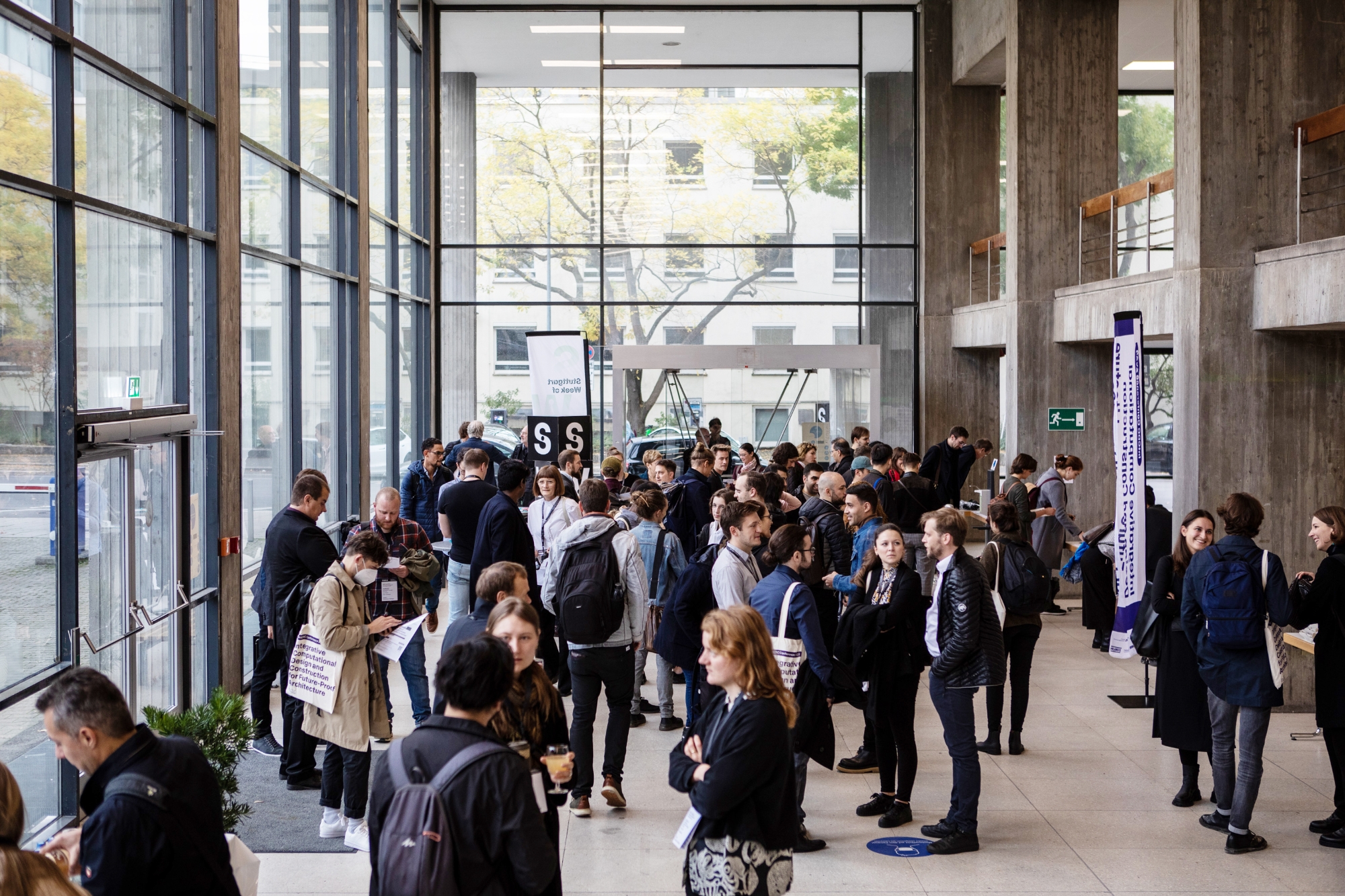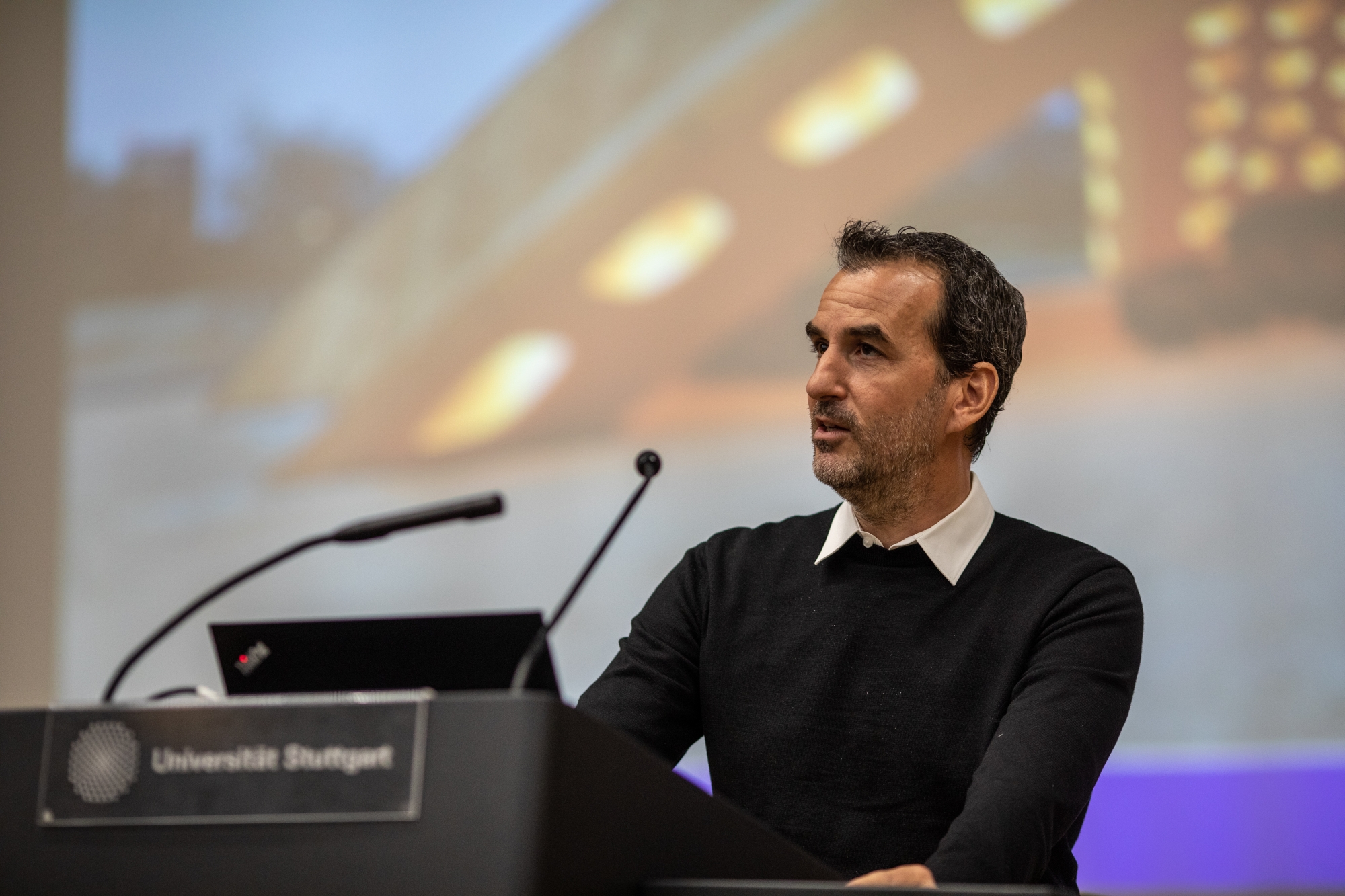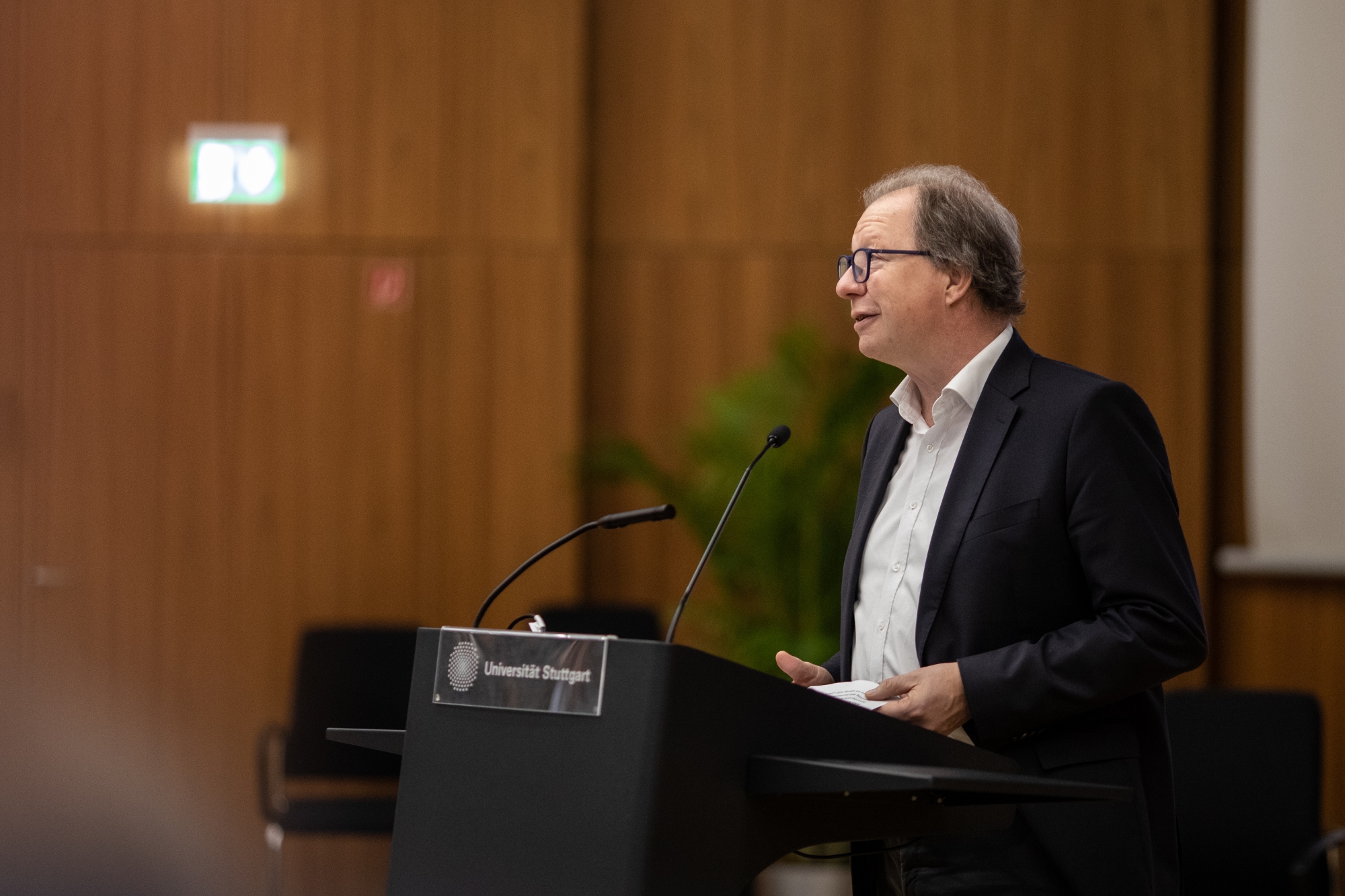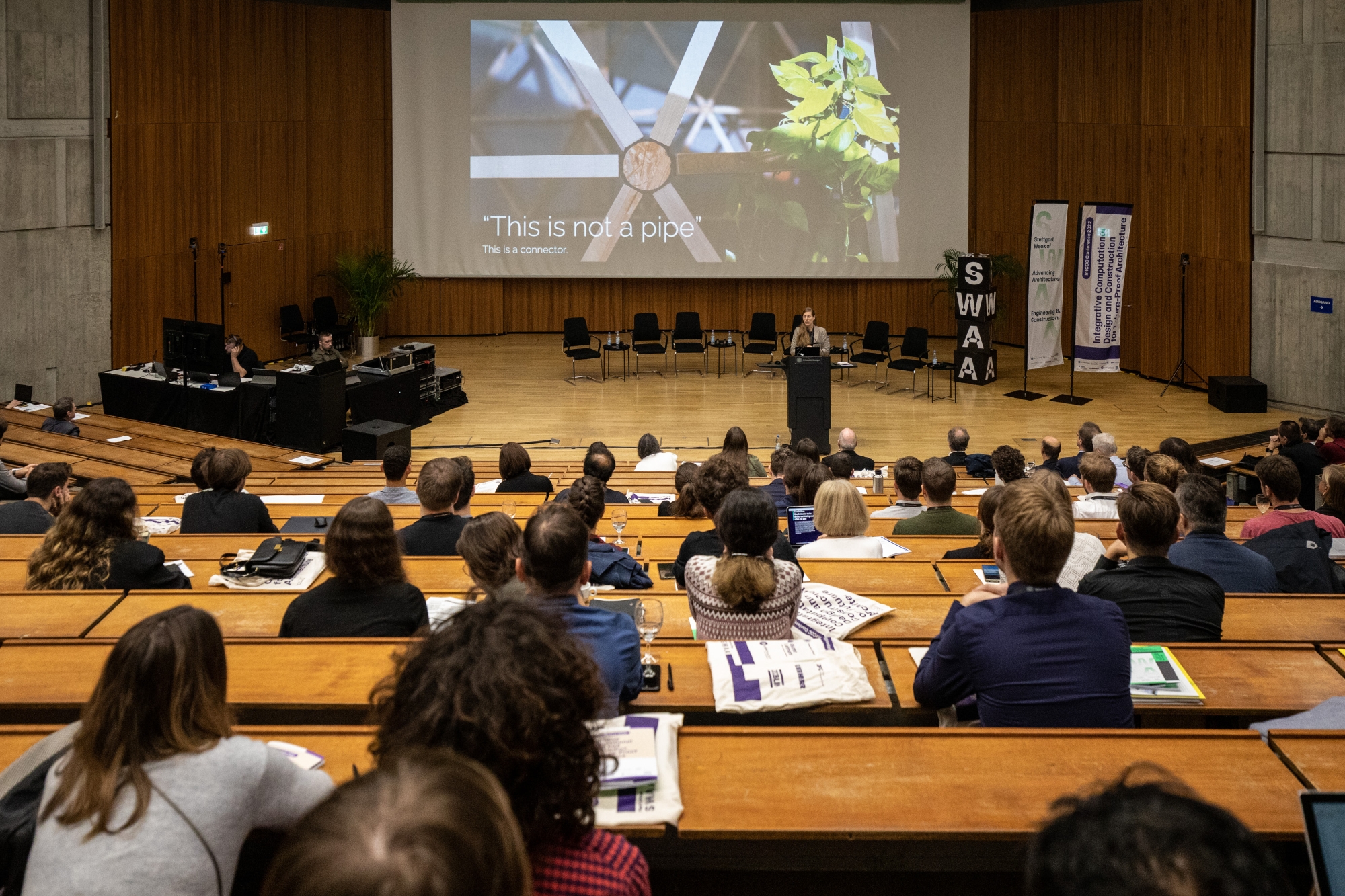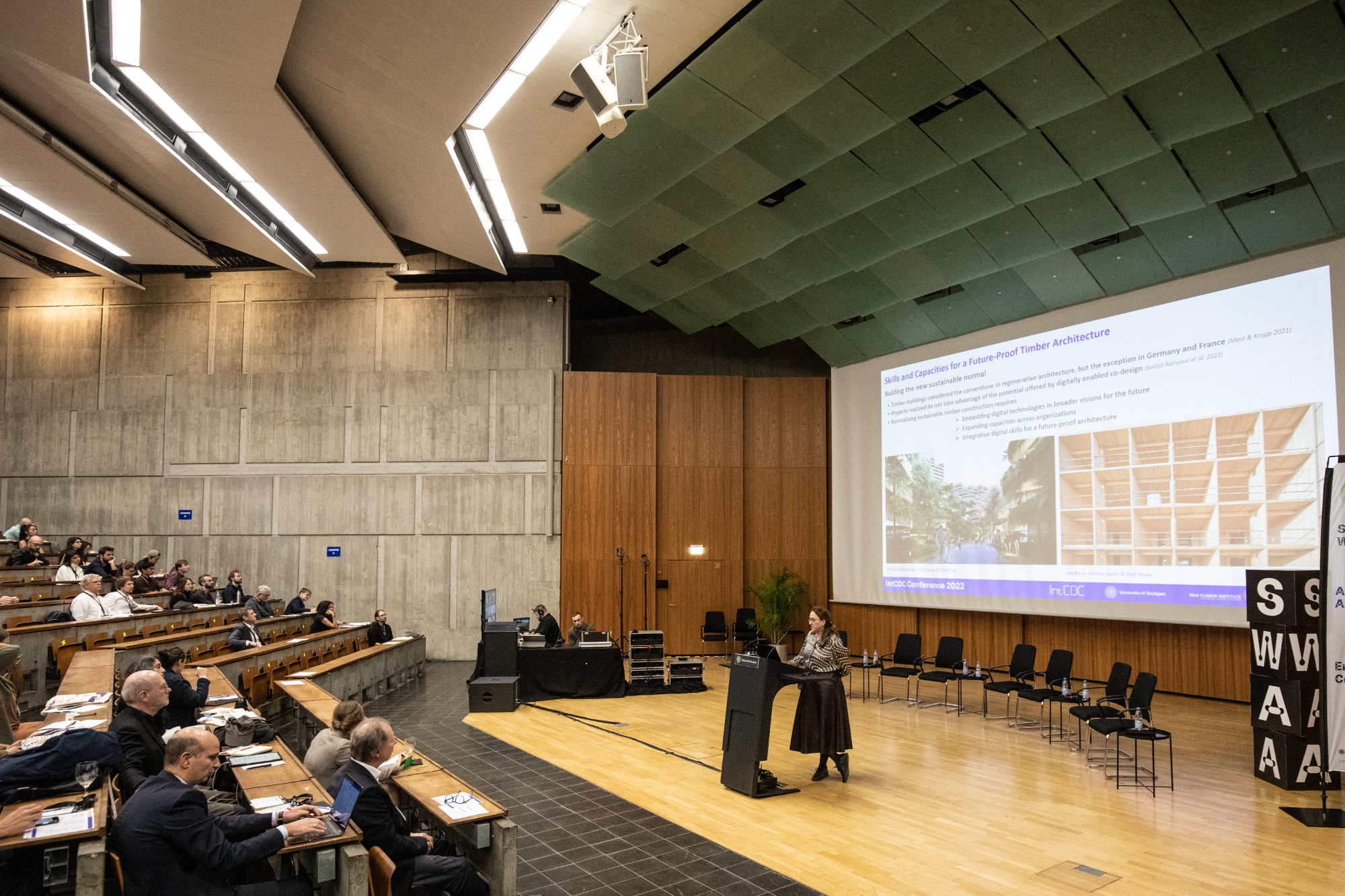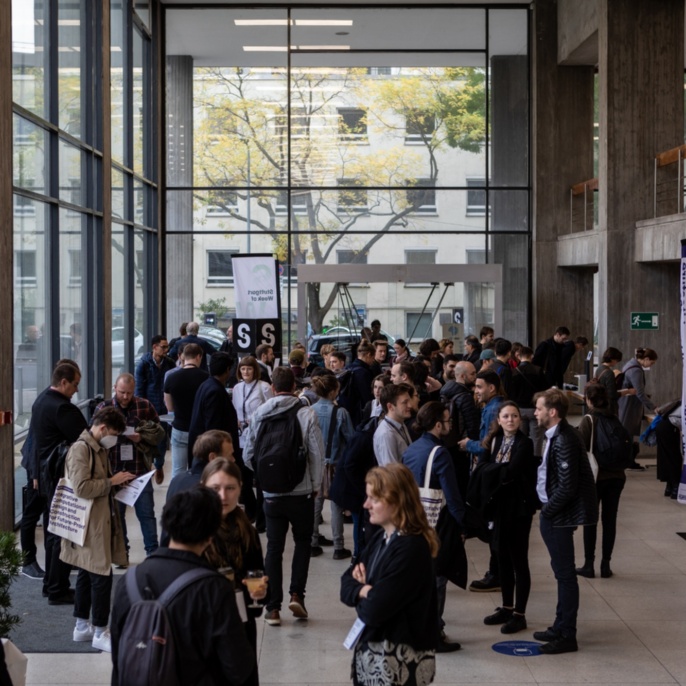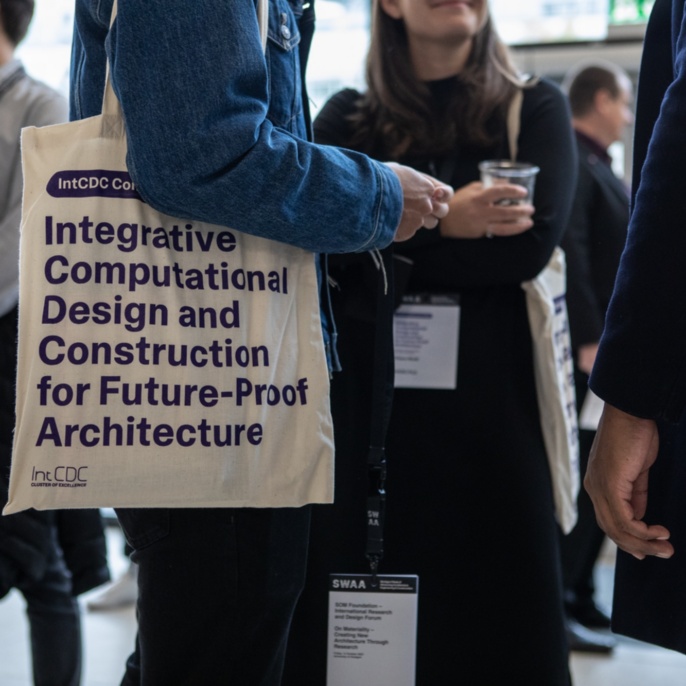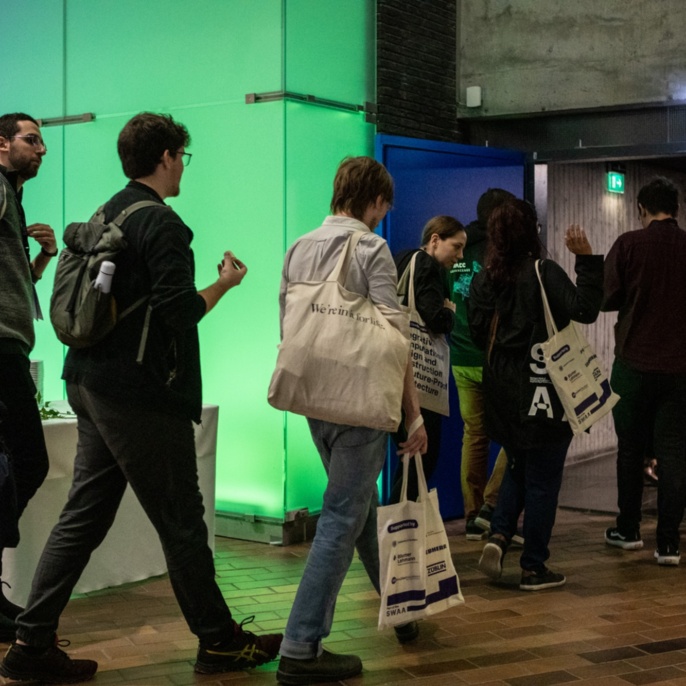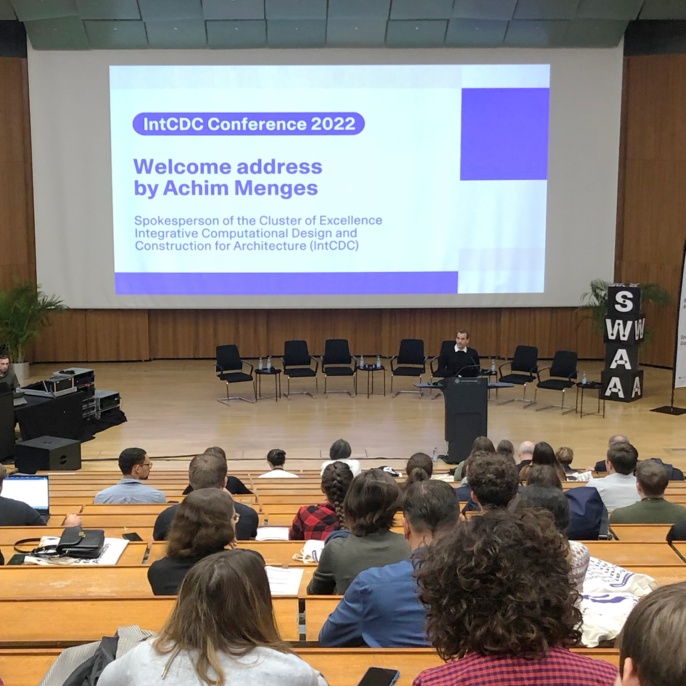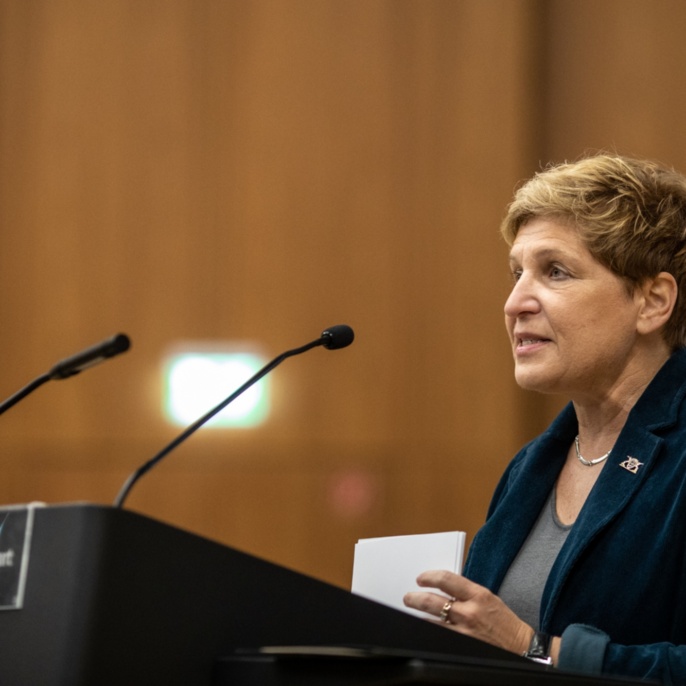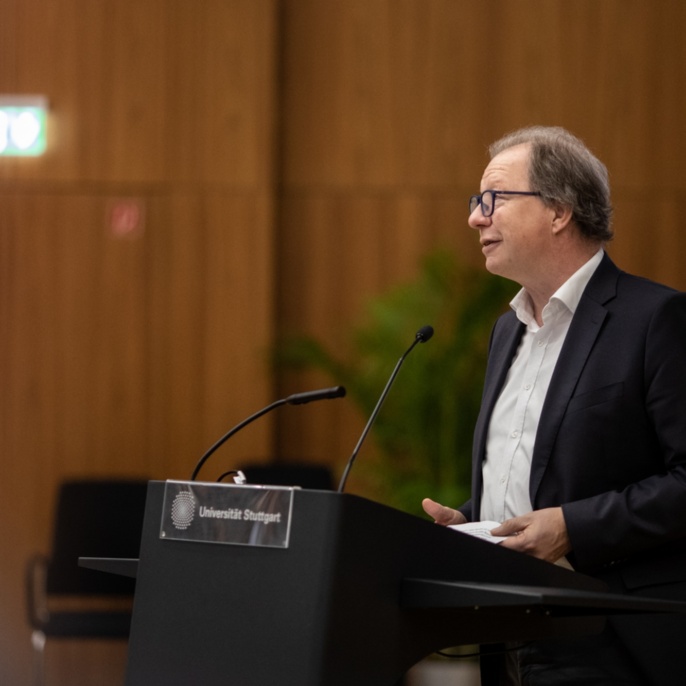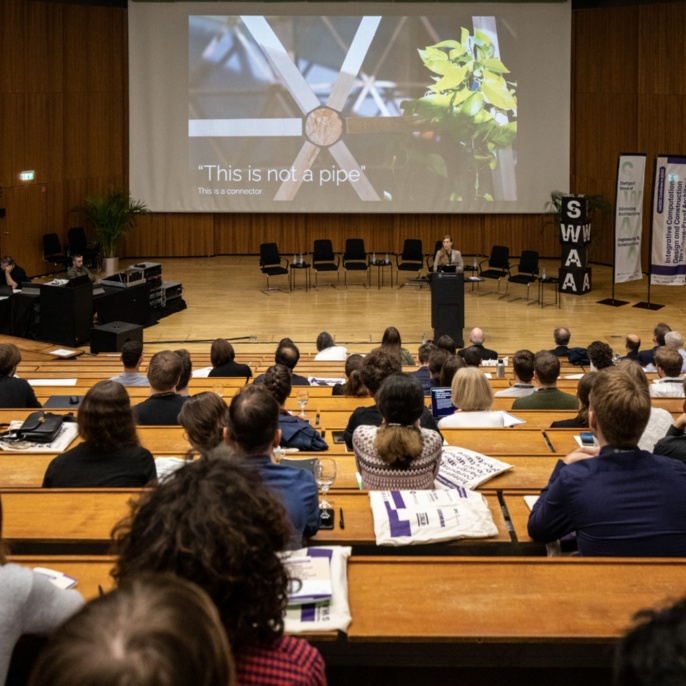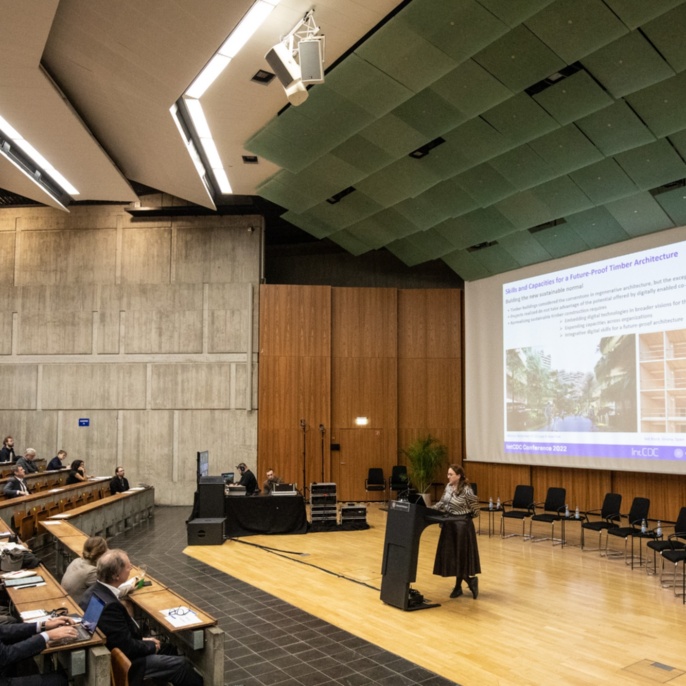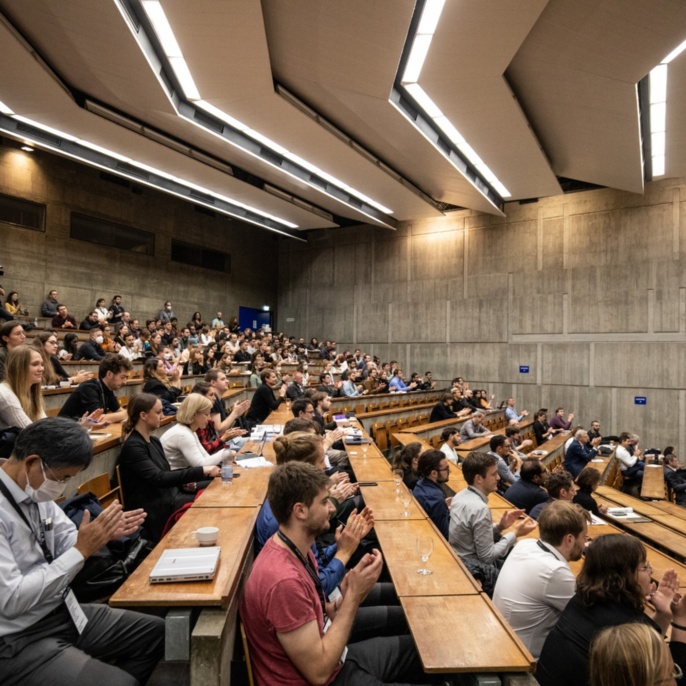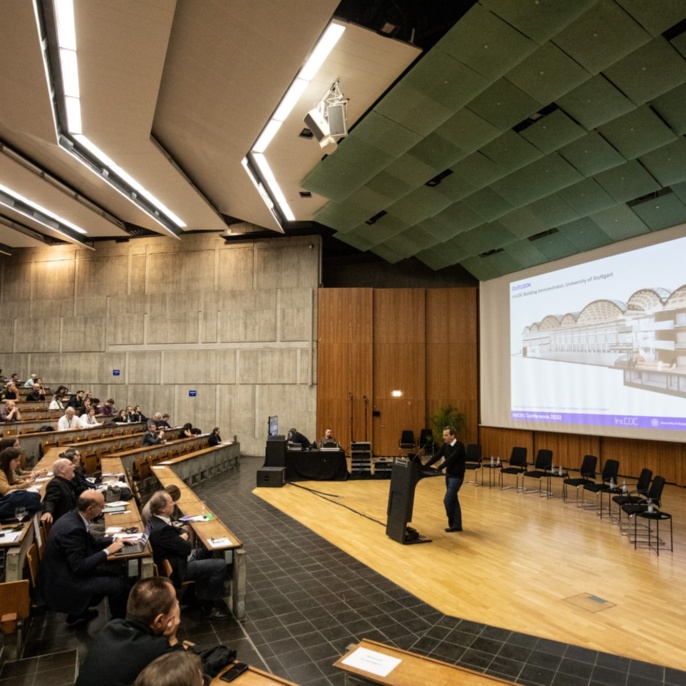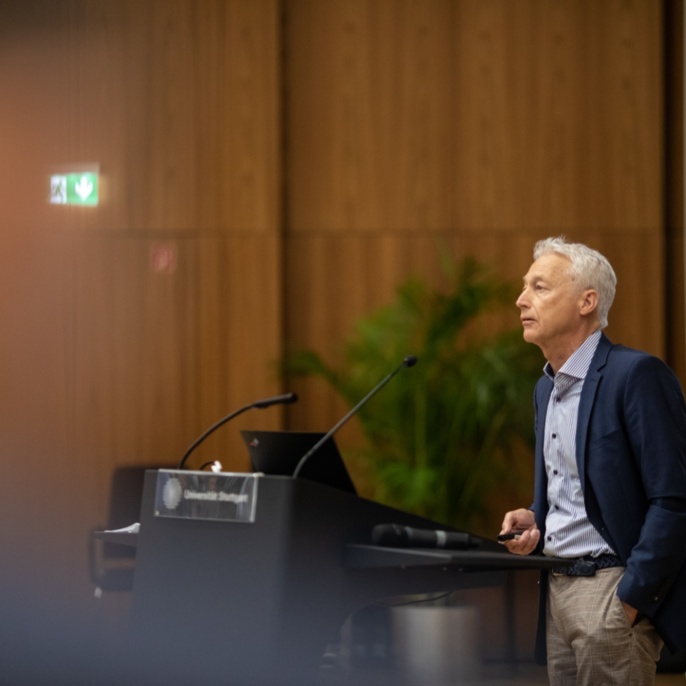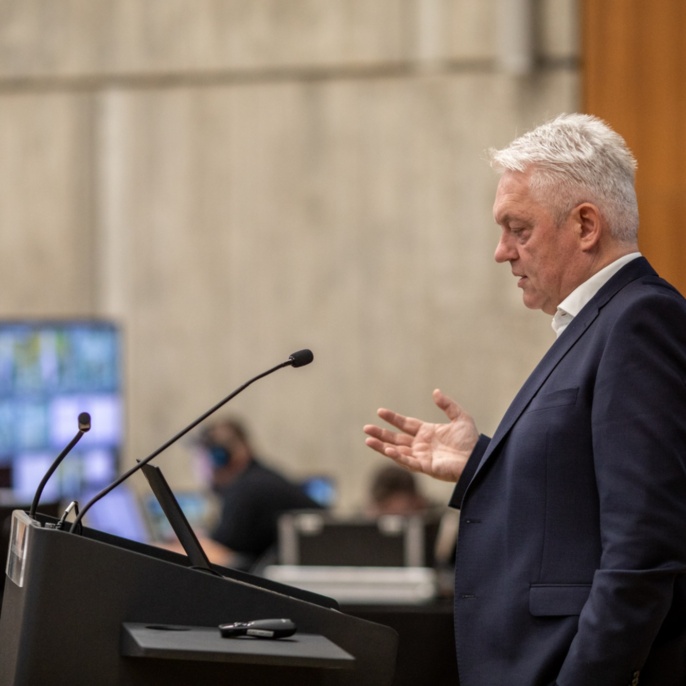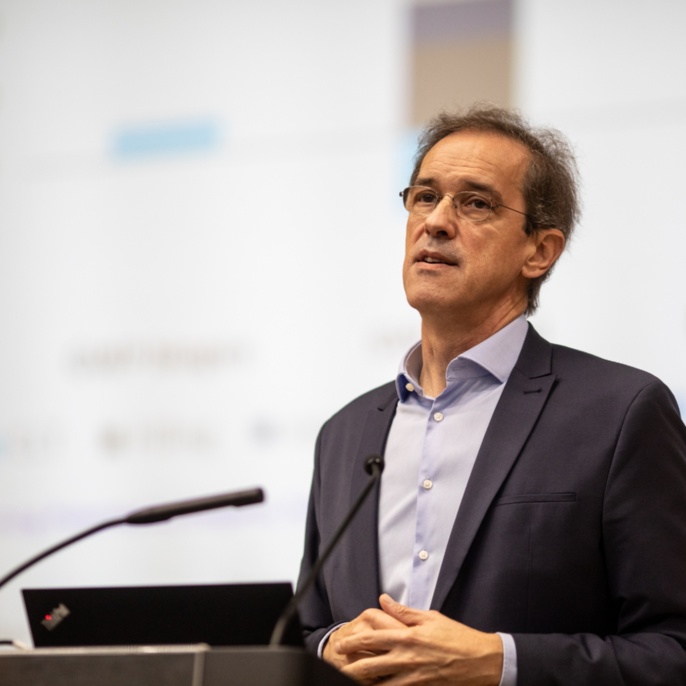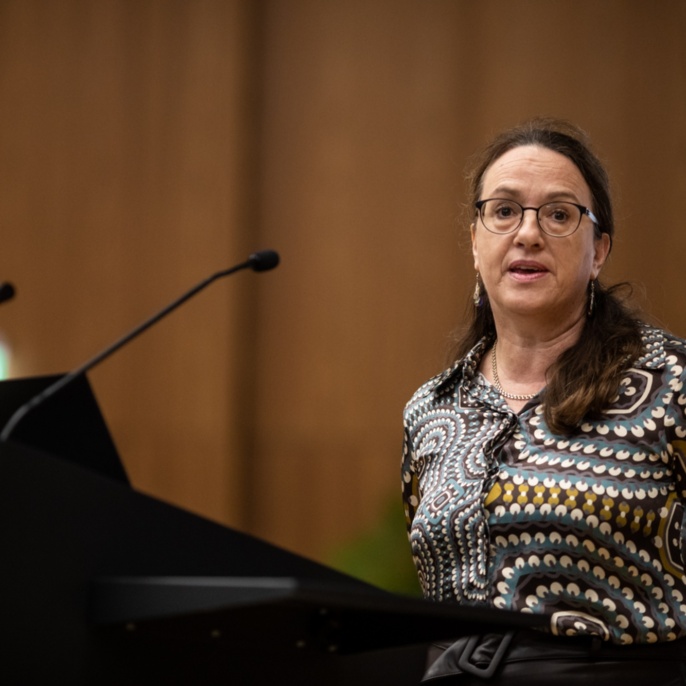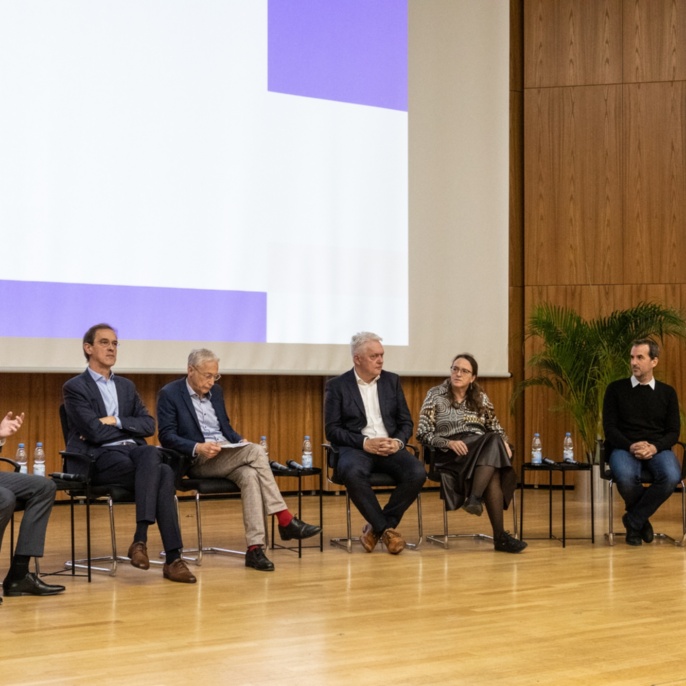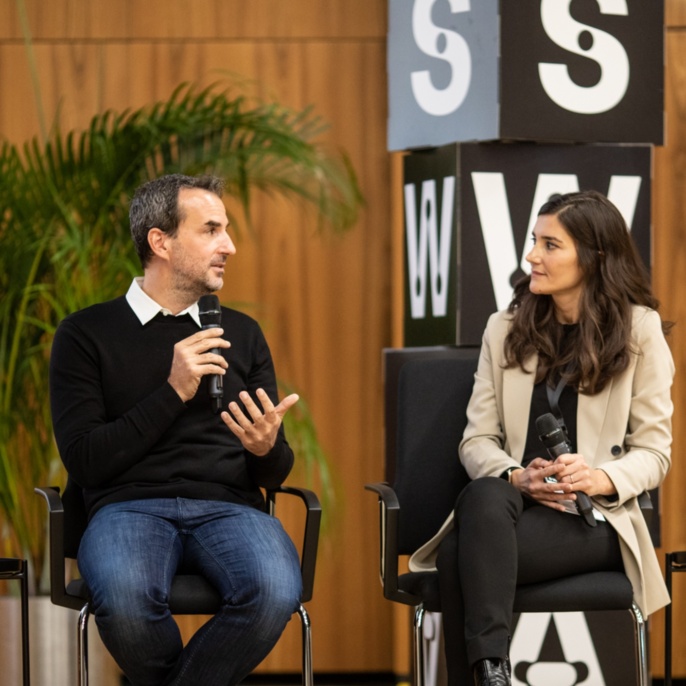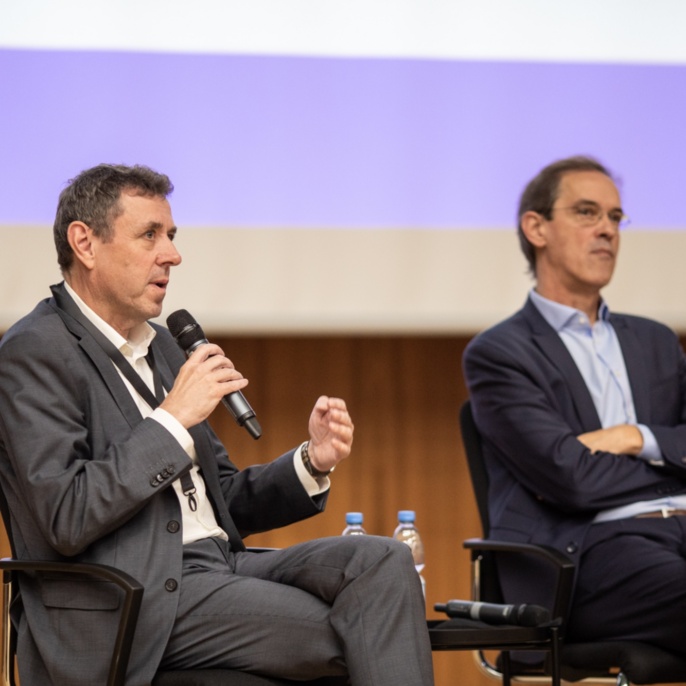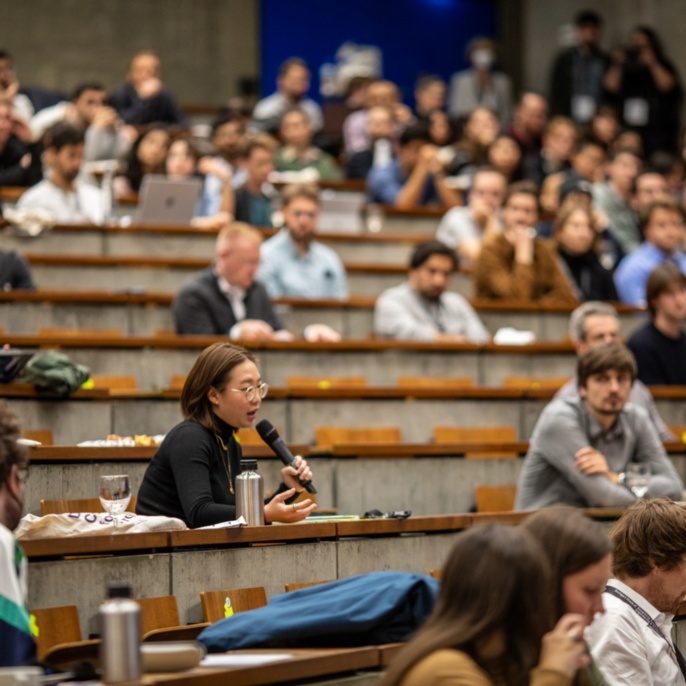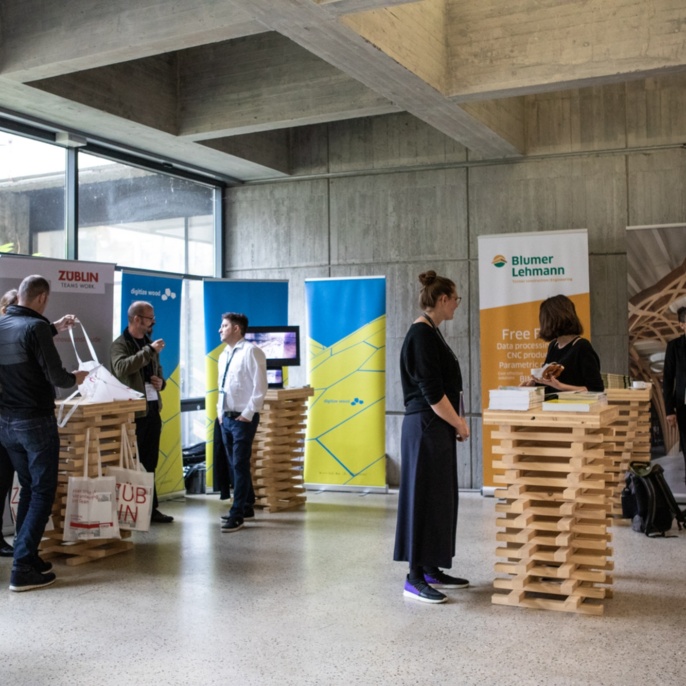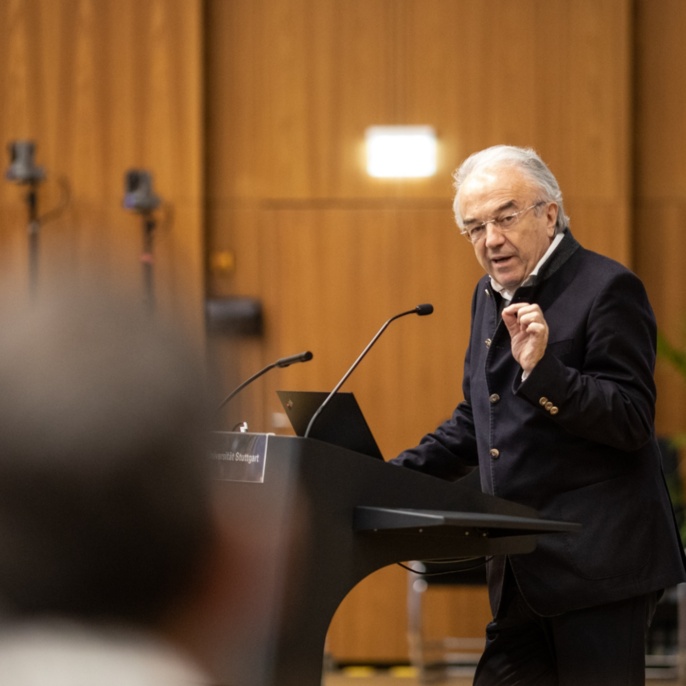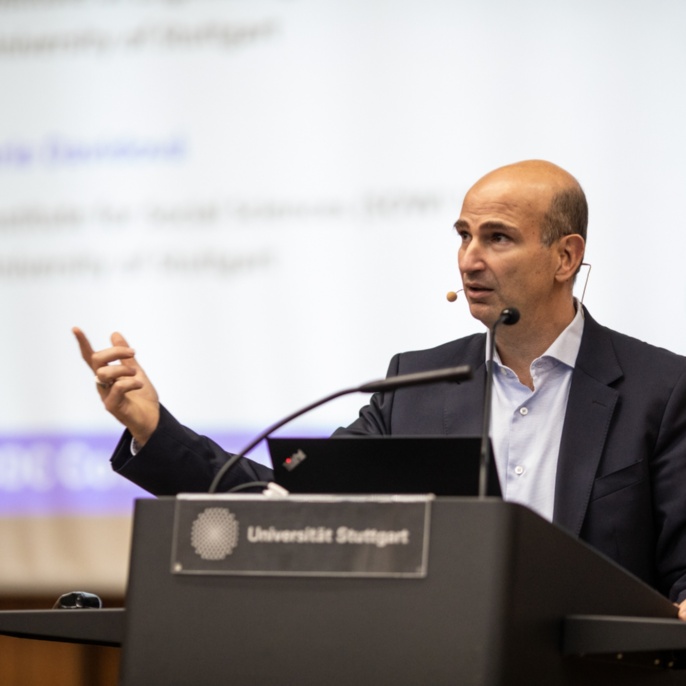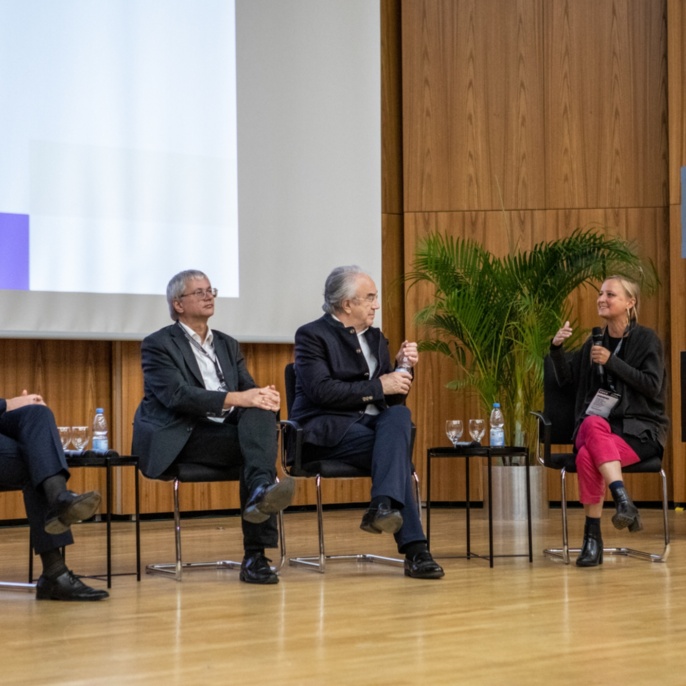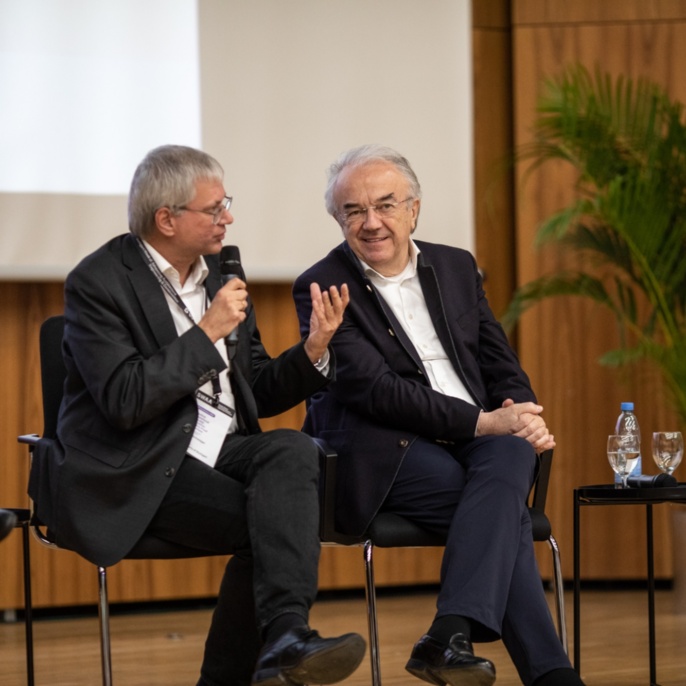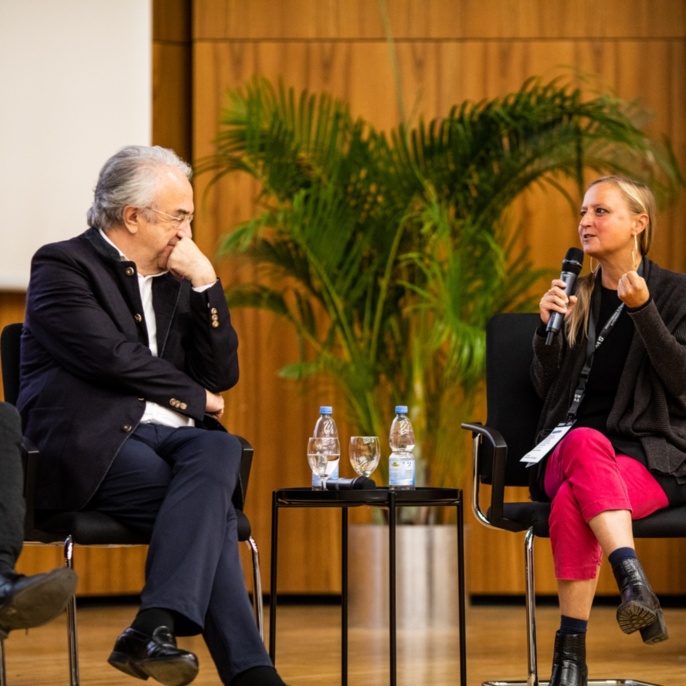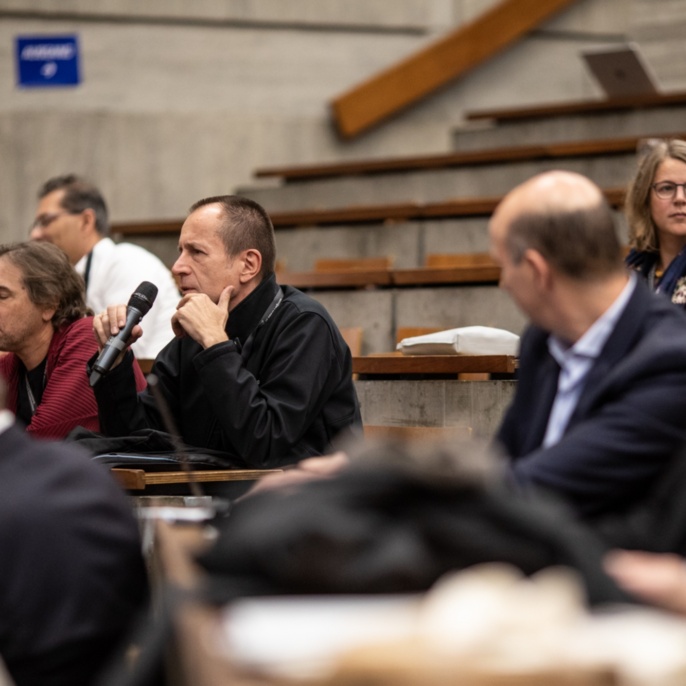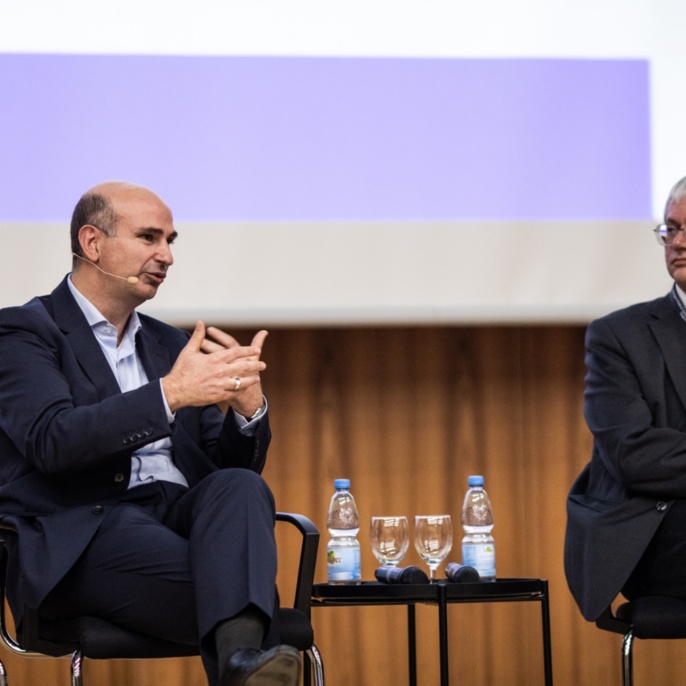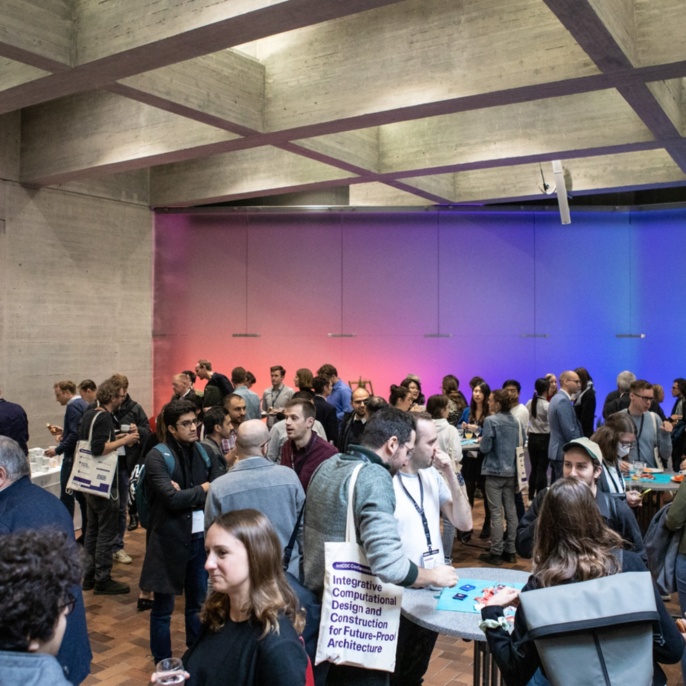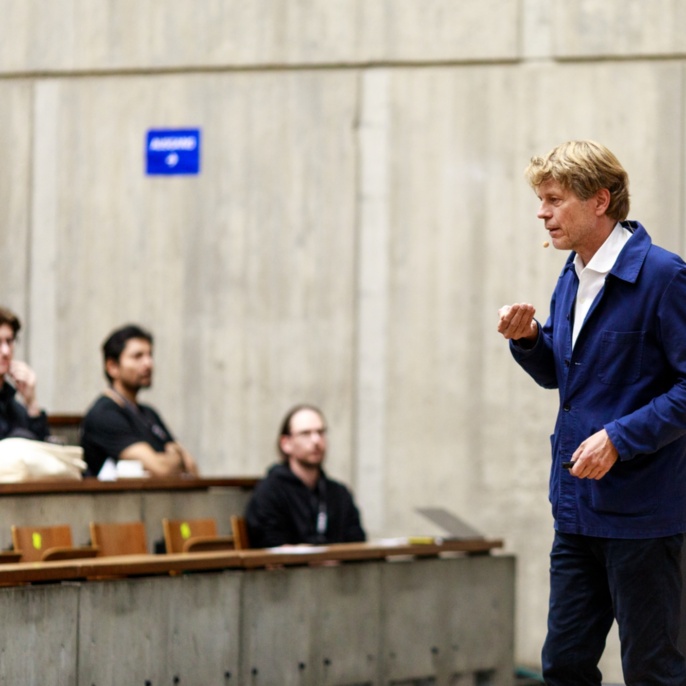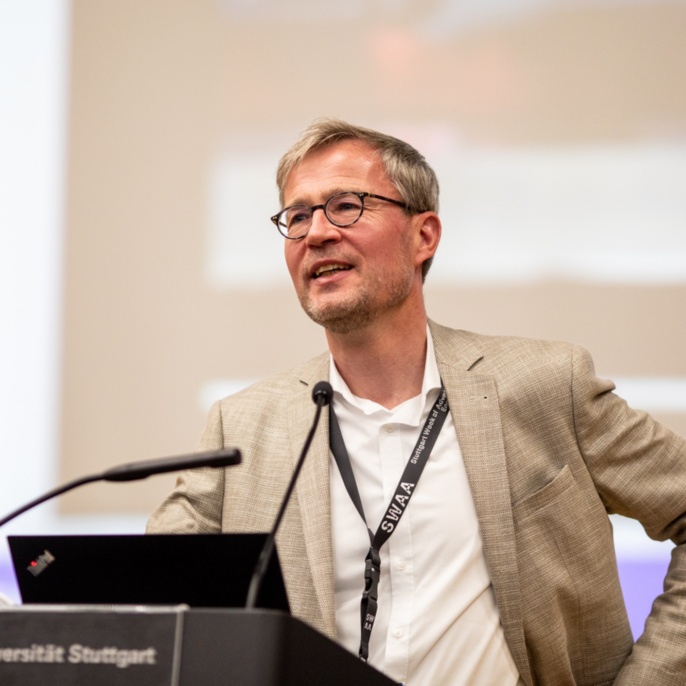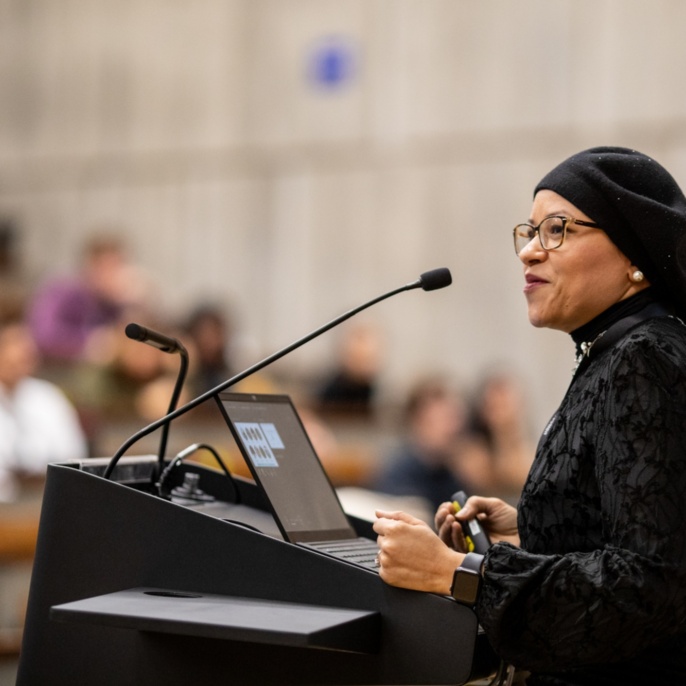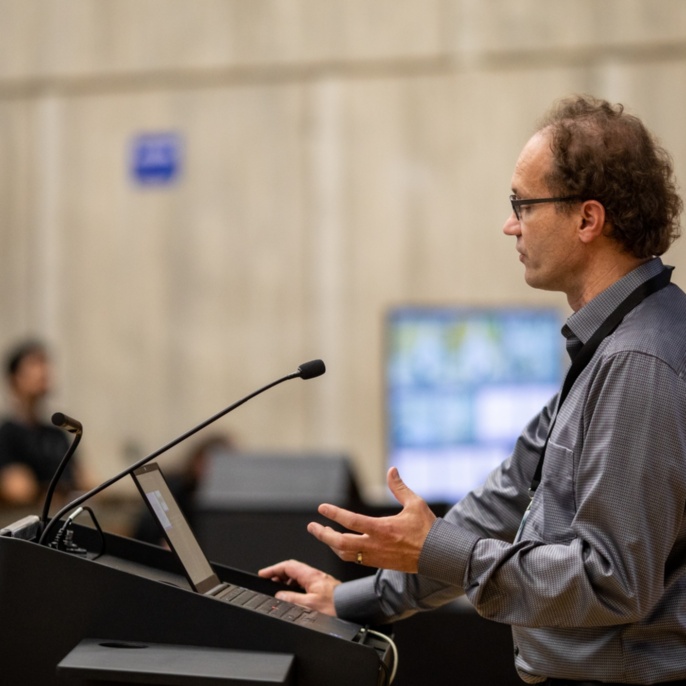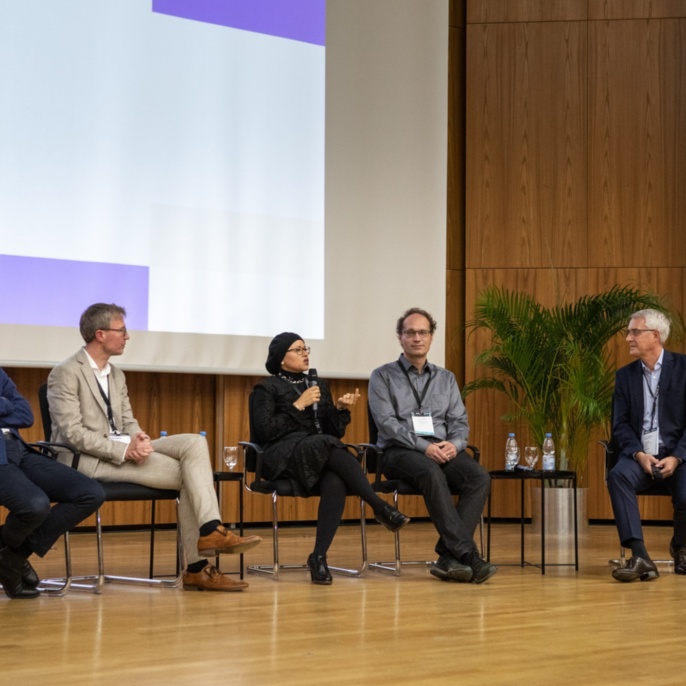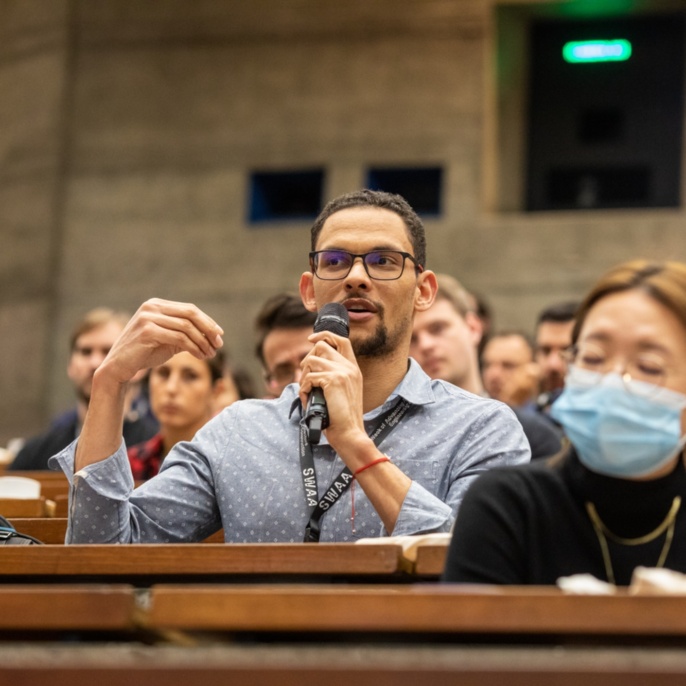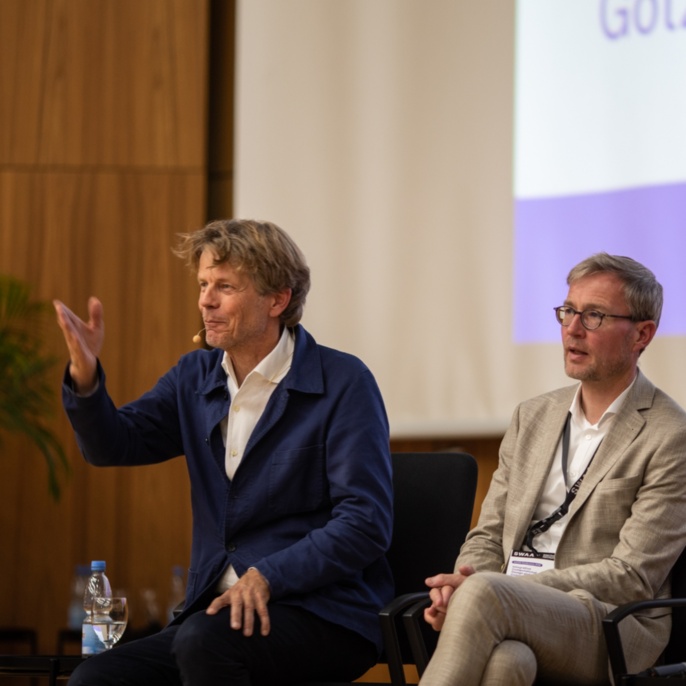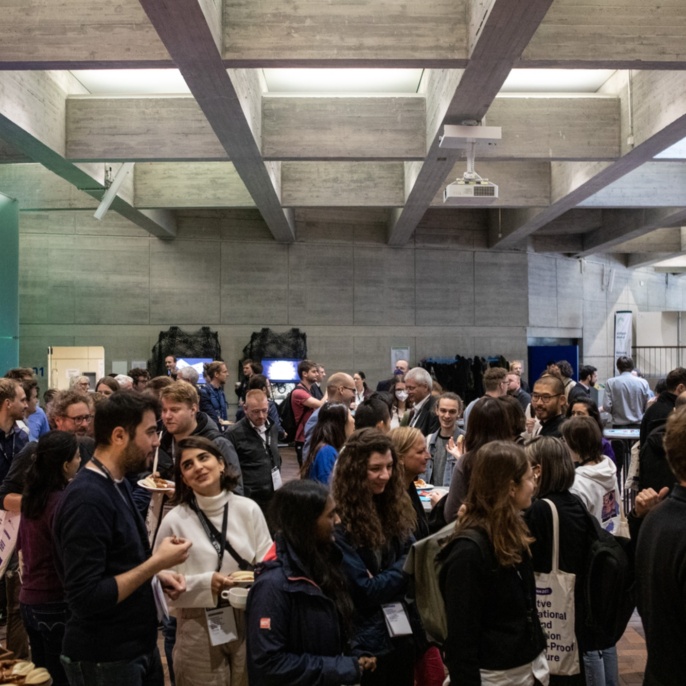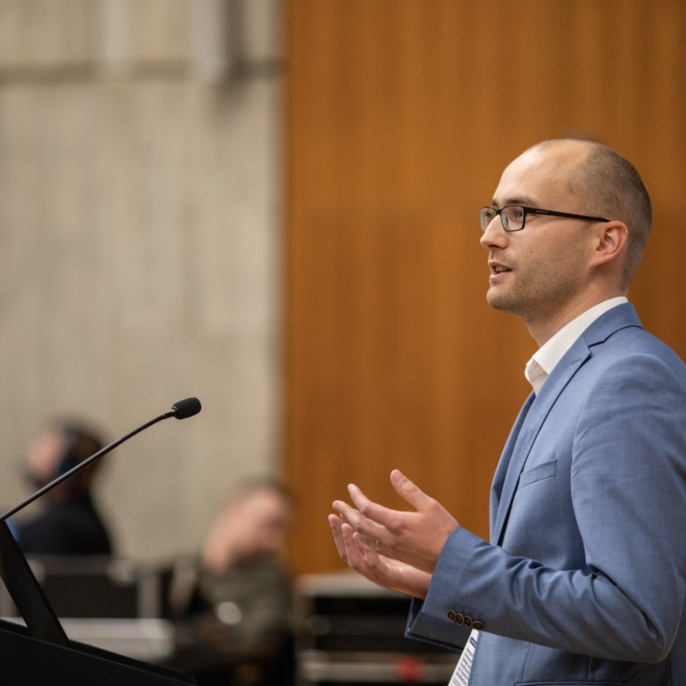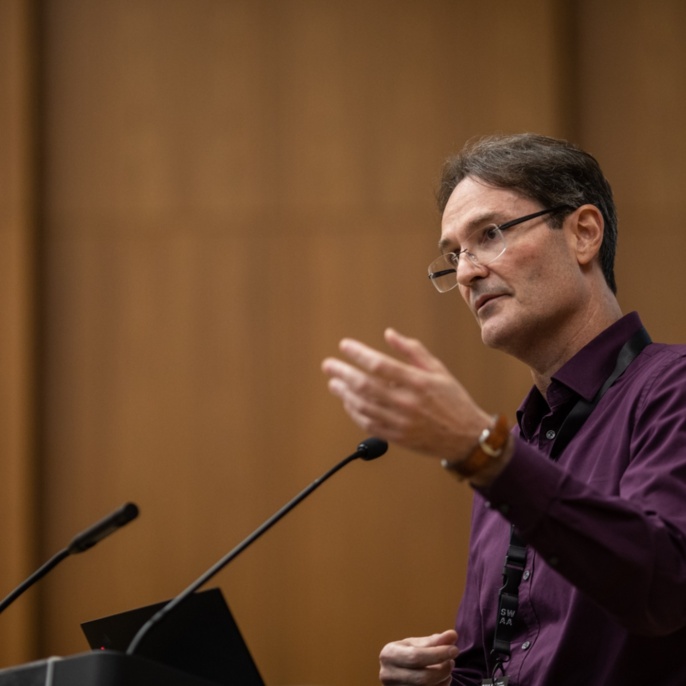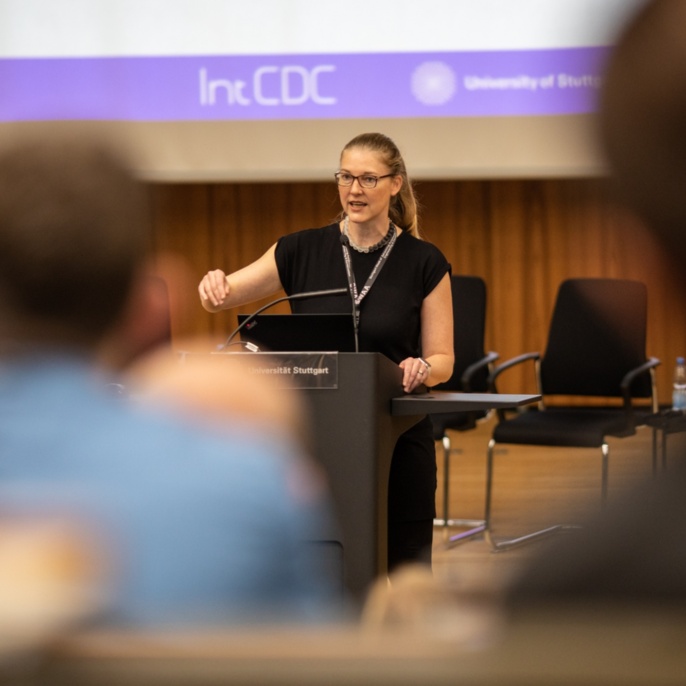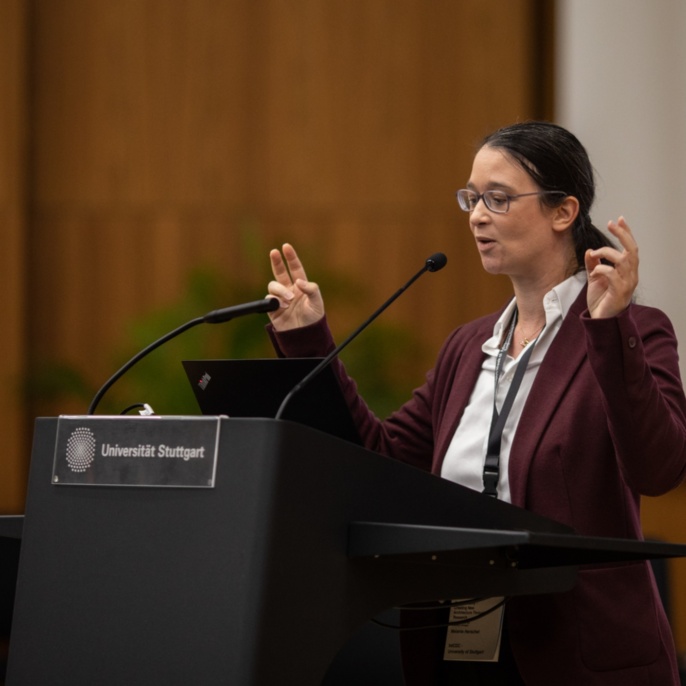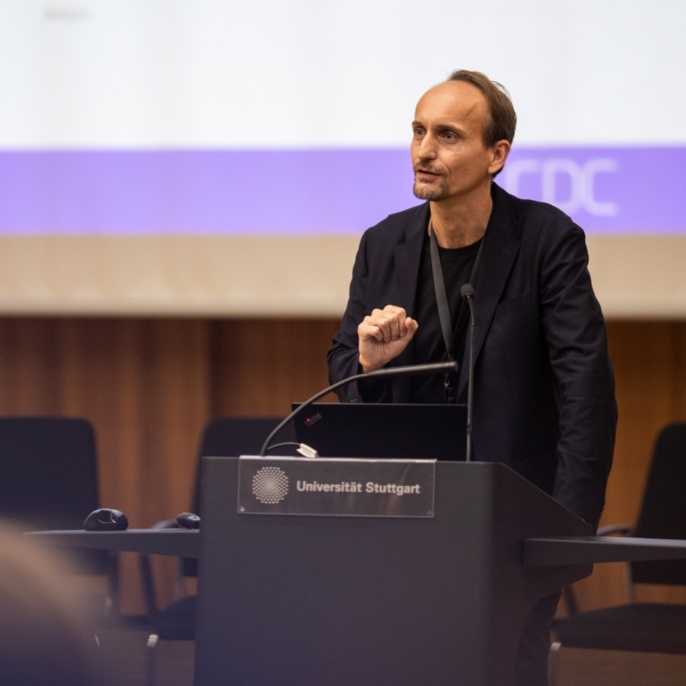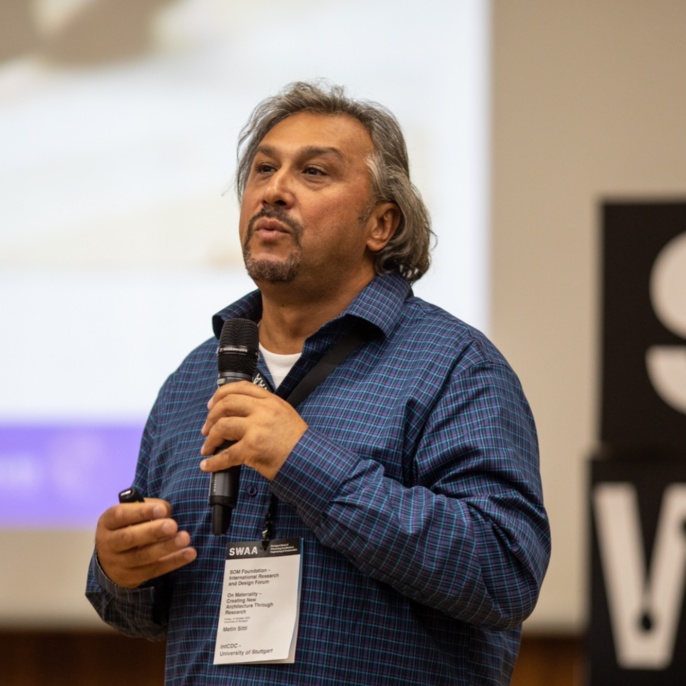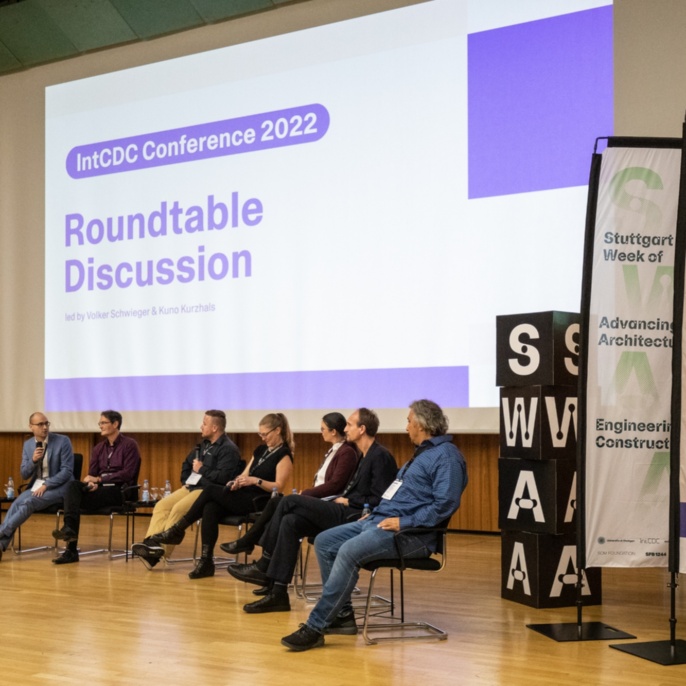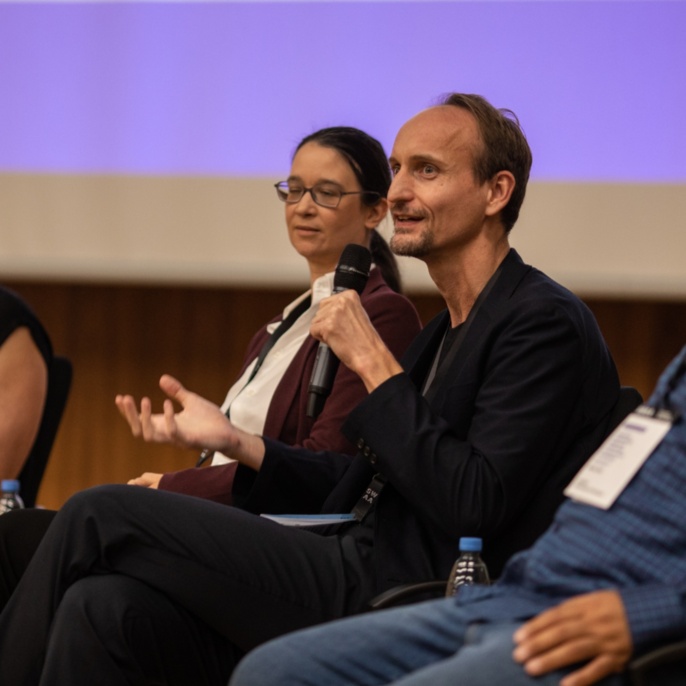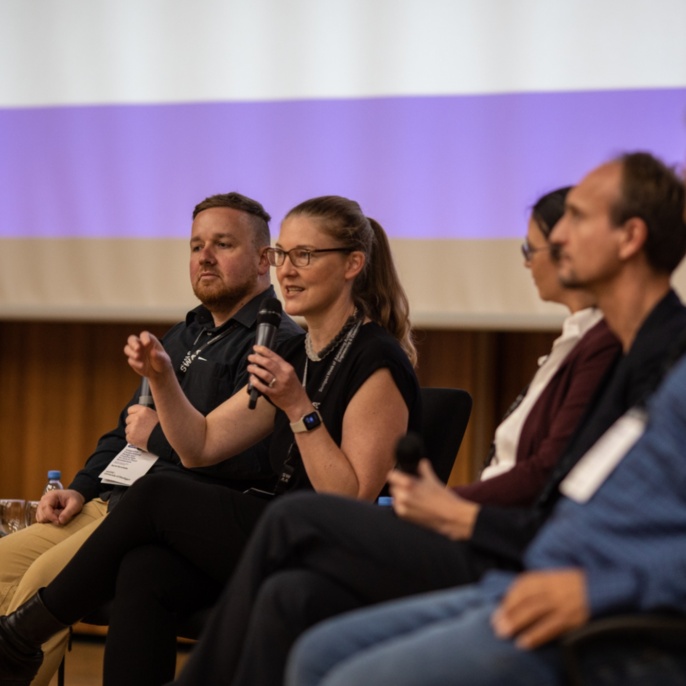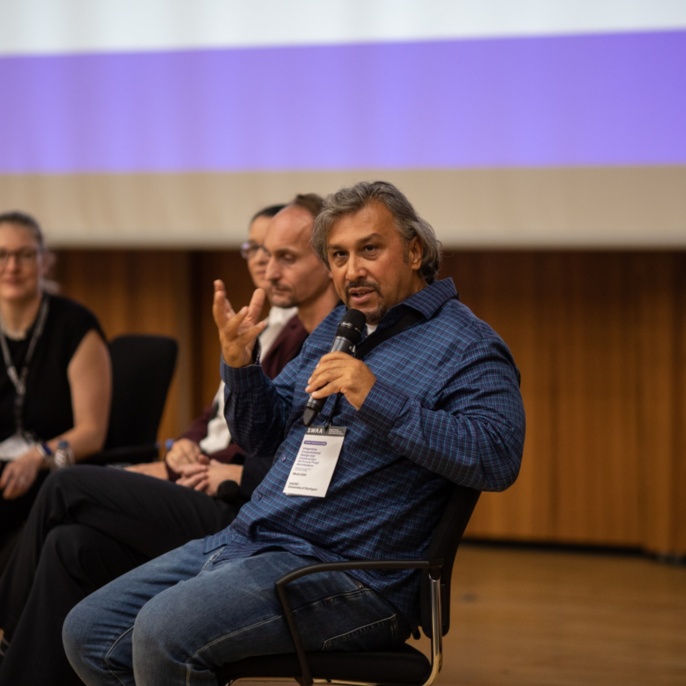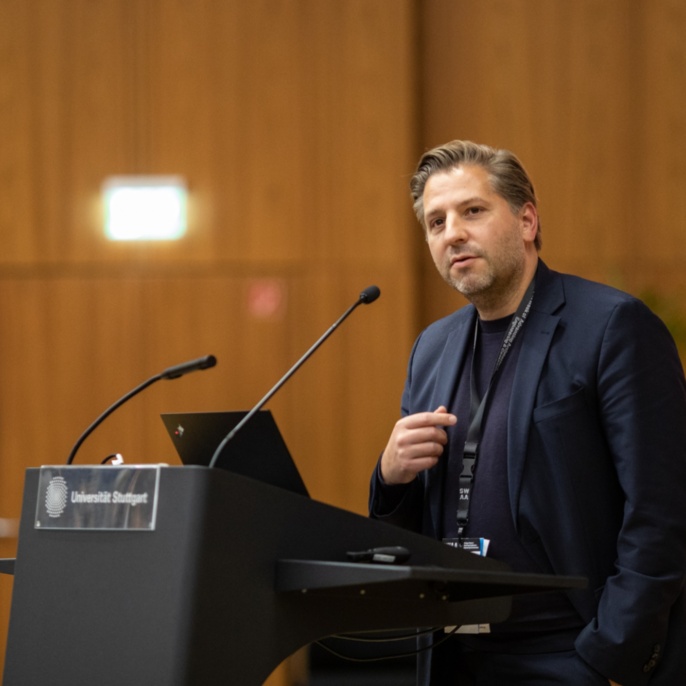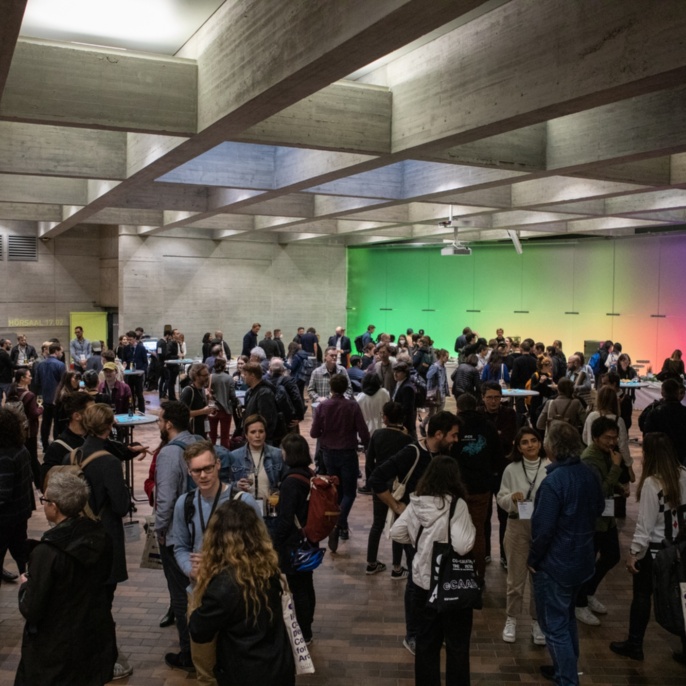The second IntCDC Conference on “Integrative Computational Design and Construction for Future-Proof Architecture” took place on October 13, at the University of Stuttgart, within the realm of the Stuttgart Week of Advancing Architecture, Engineering and Construction (SWAA) organized by the Cluster of Excellence IntCDC.
More than 420 participants were able to benefit from remarkable keynotes and gained insight into the highly interdisciplinary and cutting-edge research on rethinking design and construction of the Cluster through participation in the four different sessions offered.
In their welcoming addresses, Nicole Razavi, Minister of State Development and Housing, Baden-Württemberg, and Wolfram Ressel, Rector of the University of Stuttgart, emphasized the unparalleled and ground-breaking research approach of IntCDC that connects architecture, civil engineering, manufacturing and system engineering, computer science and robotics, as well as social sciences and the humanities – all with the aim to create future-proof architecture.
Catherine De Wolfe, ETH Zurich, shared her expertise as assistant professor of the Circular Engineering for Architecture (CEA) lab that conducts research on digital innovation towards a circular built environment, in her exceptional opening keynote “This is not a pipe / beam / floor - digitalization for circular construction.”
The following engaging lecture by Cordula Kropp on "A Social Science Perspective on IntCDC" led into the four Cluster Sessions where initial research results from researchers at the University of Stuttgart and the Max Planck Institute for Intelligent Systems were presented and discussed.
Session 1 “Future-Proof Timber Architecture” was introduced with a key note by Achim Menges, followed by the subsequent impulse lectures of this session:
Simon Aicher presented “Timber Engineering: Mono-material high performance connections”, Alexander Verl shared his expertise on the “Adaptable and Reconfigurable Timber Prefabrication Platform”, Philip Leistner provided insights into “Building Physics: sustainable-oriented acoustic solutions” and Cordula Kropp concluded the session with the lecture on “Skills and Capacities for a Future-Proof Timber Architecture”.
Serena Gambarelli and Manfred Bischoff led the following roundtable discussion of the meeting.
Session 2 focused on “The Future of Concrete Construction: Light and Sustainable” with an expert view by Werner Sobek on “Functionally Graded Concrete” and an insightful presentation by Lucio Blandini on “Light and sustainable concrete structures - What Comes next”. The session was concluded by a roundtable discussion led by Volker Schwieger and Marie Davidová.
Session 3 was opened by Jan Knippers giving an outlook on “Fibrous Structures for Resource Efficient Building Systems of the Future Cyber-Physical Construction of Co-Design” followed by the subsequent impulse lectures of this session:
Peter Middendorf provided insight into “Fibrous Composite Manufacturing: From Aerospace Technologies to Building Systems” which led to Jan Knippers’ insightful presentation on “Fibrous Tectonics: a new building system for architecture”. Hanna Dahy shared her expertise on “Bio-based Materials and Digital Fabrication for Architecture” and Daniel Weiskopf highlighted the importance of “Interactive Visualization” in the various fields of IntCDC. The session was closed with a roundtable discussion led by Götz T. Gresser.
Session 4 provided a deep dive into the “Cyber-Physical Construction of Co-Design”
The session was opened by Andreas Gienger, on behalf of Oliver Sawodny, with a presentation on “Construction Cybernetics” and followed by the subsequent impulse lectures of this session:
Uwe Sörgel highlighted the “Contributions of Geodesy“, including seamless positioning, workspace mapping and monitoring for autonomous crane operation. Katherine K. Kuchenbecker shared research findings on “Human-Machine Interaction” followed by a presentation providing an overview on “Central Data Management and Data Integration Platform” by Melanie Herschel. Thomas Wortmann shared his expertise on “Cyber-Physical Data Management for Multi-Actor Fabrication Processes” and Metin Sitti provided an outlook on “Towards Autonomous Operation on the Construction Site” using distributed robotic systems for architectural construction. The session was concluded by a roundtable discussion led by Volker Schwieger and Kuno Kurzhals.
With his highly inspiring closing keynote “Rethinking (the) built” Georg Vrachliotis, TU Delft, connected the dots of digital building culture and the legacy of architecture and engineering in Stuttgart in a very sophisticated manner.
In his closing remarks, Achim Menges expressed his gratitude to all speakers for their insightful presentations and lively discussions, and especially to the entire team of IntCDC researchers, who have worked so hard during the past three years and achieved the excellent results. Further he addressed special thanks to the German Research Foundation DFG for the extremely generous funding of the cluster and the University of Stuttgart for its unwavering support.
He also highlighted that a day like this would not be possible without the industry and media partners of IntCDC. He thanked Züblin, Liebherr, Blumer-Lehmann and Müllerblaustein for their generous sponsorship, and Detail and Bauwelt for their media support.



